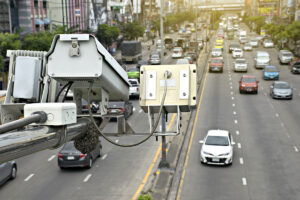The Debate Over Speed Cameras and Red-Light Cameras

In the realm of traffic enforcement, speed cameras and red-light cameras have become ubiquitous tools used by authorities to enhance road safety and deter violations. However, their effectiveness and ethics have sparked intense debates among policymakers, motorists, and civil liberties advocates. Let’s delve into the pros and cons of these controversial devices.
Pros:
Enhanced Safety: The primary aim of speed cameras and red-light cameras is to improve road safety by reducing speeding and discouraging red-light running. Studies have shown that these cameras effectively decrease the number of traffic violations, subsequently lowering the incidence of accidents, injuries, and fatalities.
24/7 Monitoring:
Unlike law enforcement officers who cannot be omnipresent, cameras can operate round-the-clock, providing continuous surveillance of intersections and speeding zones. This constant monitoring acts as a deterrent, encouraging motorists to always adhere to traffic laws.
Free Up Police Resources:
By automating the enforcement process, speed cameras and red-light cameras alleviate the burden on law enforcement agencies. This allows police officers to allocate their time and resources to other pressing matters, such as addressing more serious crimes or patrolling areas with higher crime rates.
Objective Enforcement:
Cameras eliminate human biases and inconsistencies often associated with traditional enforcement methods. They capture violations based on predetermined criteria, ensuring that all motorists are treated fairly and equally under the law.
Revenue Generation:
While controversial, the fines collected from traffic violations captured by these cameras can contribute to municipal budgets. This revenue can be reinvested into road maintenance, public transportation, or other community programs.
Cons:
Privacy Concerns:
Critics argue that the widespread use of surveillance cameras encroaches upon individuals’ privacy rights. The constant monitoring of motorists’ behavior raises apprehensions about government overreach and the potential for misuse or abuse of the collected data.
Accuracy Issues:
Speed cameras and red-light cameras are not infallible. Technical glitches, calibration errors, and environmental factors such as weather conditions can lead to inaccuracies in capturing violations. False positives may result in innocent motorists being penalized, eroding public trust in the system.
Financial Incentives:
The perception that municipalities deploy these cameras primarily for revenue generation rather than road safety has led to skepticism among the public. Concerns about profit motives may undermine the legitimacy of traffic enforcement efforts and breed resentment among motorists.
Limited Effectiveness:
While proponents tout the effectiveness of cameras in reducing traffic violations, some studies suggest that their impact on overall road safety is limited. Critics argue that motorists may simply adjust their behavior in the vicinity of cameras, only to revert to risky driving habits elsewhere.
Legal Challenges:
Speed cameras and red-light cameras have faced legal challenges in various jurisdictions. Disputes over the constitutionality of automated enforcement, the validity of citations, and issues related to due process have resulted in litigation, adding complexity and uncertainty to their implementation.
In conclusion, the debate surrounding speed cameras and red-light cameras reflects broader tensions between public safety, individual liberties, and government authority. While proponents argue that these devices save lives and promote responsible driving behavior, opponents raise valid concerns about privacy, accuracy, and the potential for abuse. Achieving a balance between effective traffic enforcement and safeguarding civil liberties remains a complex challenge for policymakers and communities alike. Ultimately, any decision regarding the deployment and regulation of these technologies must carefully consider both the benefits and drawbacks they entail.

